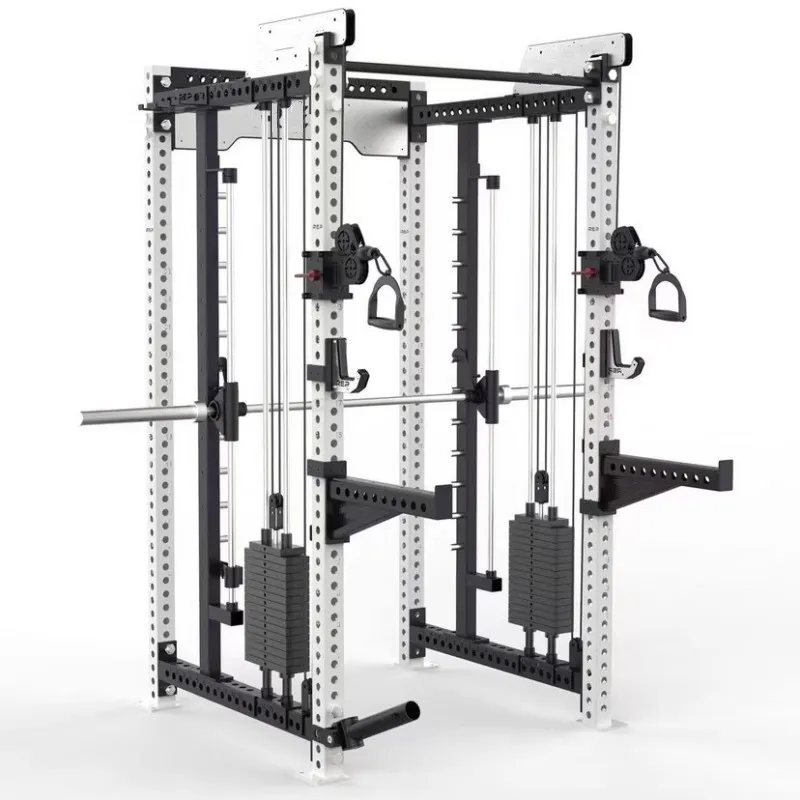How Do Rigs and Racks Transform Modern Workspaces?
2024-12-11
In today’s fast-paced work environments, from industrial settings to data centers and warehouses, organization and efficiency are paramount. This is where rigs and racks come into play. But what exactly are they, and how do they contribute to transforming modern workspaces?
1. What Are Rigs and Racks?
Rigs and racks are structures designed to hold and organize equipment, tools, or materials in a specific arrangement. While the term "rig" is often associated with heavy-duty equipment used in construction, drilling, or broadcasting, "racks" are more commonly used for storing items in data centers, warehouses, or even home offices. Both serve to maximize space and improve workflow in various industries.
2. How Do Rigs and Racks Work?
- Rigs: Typically larger, these are custom-built to support heavy machinery or systems. In sectors like oil drilling, construction, or broadcast, rigs provide stable platforms or frameworks to support complex equipment, enabling operators to work more efficiently and safely.
- Racks: Smaller in scale but just as essential, racks are used to organize, store, and display equipment, tools, or items. For example, server racks in data centers store multiple servers in a compact vertical structure, while storage racks in warehouses ensure items are accessible and easy to retrieve.
3. Where Are Rigs and Racks Used?
- Industrial and Construction Sites: Rigs are commonly used to house machinery, tools, or safety systems in industries like oil, mining, and construction.
- Data Centers: Racks are integral in organizing servers and networking equipment to optimize space and airflow for better performance.
- Warehouses and Distribution Centers: Racks are crucial for organizing products, enabling faster retrieval, and maximizing vertical space.
- Retail and Offices: In less industrial settings, racks are used for organizing inventory, display purposes, or even holding office supplies in a neat and accessible manner.
4. Why Are Rigs and Racks Important for Efficiency?
Both rigs and racks help to maximize available space, reduce clutter, and streamline operations. In industrial environments, rigs ensure that large, heavy equipment can be safely handled, while racks allow for the efficient storage and retrieval of materials and goods. This organization reduces downtime and increases overall productivity.
5. What Are the Benefits of Using Rigs and Racks?
- Space Optimization: Racks, especially adjustable or modular ones, allow for better use of vertical and horizontal space. Rigs, while more specialized, provide a platform for effective equipment housing.
- Improved Organization: With dedicated space for equipment, tools, and materials, workspaces become more organized, reducing the time spent searching for items and enhancing overall workflow.
- Increased Safety: Both rigs and racks help keep equipment stored securely, preventing accidents caused by improperly stored tools or machinery.
- Flexibility: Many rigs and racks are designed to be adjustable, allowing businesses to adapt them to changing needs or different work environments.
6. How Do Rigs and Racks Contribute to Safety?
Especially in industrial settings, rigs are often equipped with safety features like guardrails, platforms, and weight-bearing structures to ensure stability. Racks, on the other hand, often come with features like locking mechanisms and anti-tip designs to prevent equipment from falling or being misplaced. These systems help to protect workers from injury while maintaining order.
7. Are There Any Challenges with Rigs and Racks?
While both rigs and racks provide essential organizational benefits, there are some challenges to consider:
- Customization Needs: Especially with rigs, customization may be required for specific tasks or industries, which can increase costs and design time.
- Space Constraints: Racks need to be carefully designed to fit within available spaces, and poorly configured racks can lead to overcrowding or inefficient storage.
- Maintenance: Regular maintenance and inspection of rigs, especially in high-stakes industries like oil and gas, are essential to prevent equipment failure.
8. What Innovations Are Shaping the Future of Rigs and Racks?
Advancements in materials and design are leading to rigs and racks that are lighter, more durable, and better suited for automation. For instance, intelligent racks with RFID tracking allow companies to monitor the movement and status of inventory in real time, while rigs may now come with integrated technology for enhanced monitoring and safety features.
Rigs and racks are not just about holding things in place—they are about transforming how we organize and manage workspaces across a variety of industries. From improving safety to enhancing productivity, they play an integral role in making modern work environments more efficient and effective.



